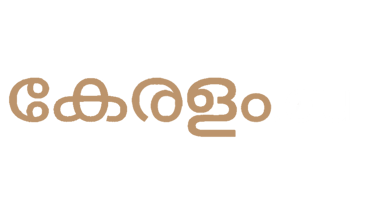
READING
IT’S TIME TO DO SOME
THE KERALA TAPESTRY: HOW PORTUGUESE MINHA DAMA BECAME MALAYALIS MADAMA
Have you ever wondered why your Malayalam-speaking grandmother uses words that sound suspiciously similar to Portuguese, Arabic, or Tamil? You're not imagining things! Malayalam, the language of Kerala, is like a beautiful quilt stitched together with threads from dozens of different languages. Today, we're diving deep into this linguistic treasure trove to explore how Malayali words have been influenced by other languages throughout history.
Walking Through Linguistic History: The Fort Kochi Experience
If you want to truly understand how Malayalam absorbed influences from other languages, there's no better way than walking through the historic streets of Kochi. Through carefully curated heritage walks and storytelling experiences, you can witness these linguistic transformations come to life in the very places where they occurred.
Picture this: you're standing in Fort Kochi, surrounded by Portuguese colonial architecture, when your expert guide points out how the word "janela" (window) that you see in old documents evolved into the Malayalam "janala." These immersive heritage experiences create meaningful connections between visitors and Kochi's rich multicultural history.
During these specially arranged heritage walks, you can literally see the layers of linguistic influence embedded in Kochi's streetscapes. The Portuguese churches still bear inscriptions with words that became part of Malayalam vocabulary. The spice markets echo with Arabic terms that traders brought centuries ago. The colonial administrative buildings showcase English words that later entered everyday Malayalam conversation.
What makes these curated heritage experiences unique:
Walking through Mattancherry, you'll hear fascinating stories of how Arabic merchant communities introduced words like "dua" and "kitab" into local Malayalam
In Fort Kochi, Portuguese colonial buildings reveal how terms like "mesa" and "kamisa" became everyday Malayalam words
The Jewish quarter shows how diverse communities contributed to Malayalam's multilingual character
Dutch Palace visits demonstrate how administrative terms from various European languages entered Malayalam
As your travel planner, we arrange these exclusive heritage experiences with local storytelling experts to ensure you get the most authentic and educational linguistic journey through Fort Kochi's historic neighborhoods.
The Story Behind Malayalam's Multilingual Nature
Malayalam didn't develop in isolation. As a language spoken in Kerala – a state that has been a major trading hub for over 2,000 years – it naturally absorbed influences from the many cultures that passed through its shores. From ancient Phoenician traders to Portuguese colonizers, from Arab merchants to British administrators, each group left their linguistic fingerprints on the Malayalam language.
This linguistic borrowing isn't unusual – in fact, it's how most languages evolve. What makes Malayalam special is the sheer diversity of its influences and how seamlessly these foreign words have been integrated into everyday speech.
Portuguese Influence: The Colonial Legacy in Malayalam Words
When Vasco da Gama landed in Calicut in 1498, he opened the floodgates for Portuguese influence in Kerala. The Portuguese didn't just bring trade goods – they brought words that are now so deeply embedded in Malayalam that many speakers don't realize their foreign origins.
Common Portuguese Loanwords in Malayalam:
Sabbu (soap) - from Portuguese "sabão"
Mesa (table) - directly from Portuguese "mesa"
Janela (window) - from Portuguese "janela"
Kamisa (shirt) - from Portuguese "camisa"
Kadalas (peas) - from Portuguese "cadillos"
Madama (madam/lady) - from Portuguese "madama" (derived from "minha dama" meaning "my lady")
Sayippe (sir/European man) - likely from Portuguese "senhor" or possibly Arabic "sahib"
These words are so naturalized that they follow Malayalam grammar rules perfectly. A Malayali speaker might say "mesa vachu" (keep the table) without ever thinking about the Portuguese origins of "mesa."
What's particularly interesting about words like "Madama" and "Sayippe" is how they reflect the social dynamics of colonial Kerala. "Madama" became a respectful term for addressing women of higher status or foreign women, while "Sayippe" was specifically used for European men. These terms show how linguistic borrowing often occurs in areas of social interaction and hierarchy, preserving historical power structures in everyday language.
Experience these colonial-era social dynamics firsthand through our specially arranged walking tours of Fort Kochi's Portuguese quarter, where expert local guides share captivating stories of how these respectful terms emerged from daily interactions between locals and colonial administrators.
Arabic and Persian: The Islamic Connection
Kerala's long-standing trade relationships with Arab merchants, dating back to the 7th century, introduced numerous Arabic and Persian words into Malayalam. This influence was further strengthened by the significant Muslim population in Kerala.
Arabic and Persian Loanwords:
Dua (prayer) - from Arabic "du'a"
Kitab (book) - from Arabic "kitāb"
Sukham (comfort/health) - from Persian "sukh"
Jamaath (community/congregation) - from Arabic "jamā'ah"
Rahasyam (secret) - from Persian "rāz"
What's fascinating is how these words often carry both religious and secular meanings, showing how deeply integrated these linguistic influences became in Kerala society.
Sanskrit: The Classical Foundation
Sanskrit's influence on Malayalam is perhaps the most profound and systematic. As the liturgical language of Hinduism and the language of classical Indian literature, Sanskrit provided Malayalam with much of its formal and literary vocabulary.
Sanskrit's Contribution to Malayalam:
Pustakam (book) - from Sanskrit "pustaka"
Vidyalayam (school) - from Sanskrit "vidyālaya"
Manushyan (human) - from Sanskrit "manuṣya"
Prakrithi (nature) - from Sanskrit "prakṛti"
The relationship between Sanskrit and Malayalam is so close that educated Malayalam speakers can often understand Sanskrit texts with minimal difficulty, much like how Italian speakers might recognize Latin roots.
Tamil Influence: The Dravidian Connection
As fellow Dravidian languages, Tamil and Malayalam share deep historical connections. Many fundamental Malayalam words have Tamil origins, particularly in areas of basic vocabulary, kinship terms, and agricultural practices.
Tamil Contributions to Malayalam:
Amma (mother) - shared across both languages
Veedu (house) - from Tamil "vīṭu"
Thanni (water) - from Tamil "taṇṇī"
Paal (milk) - identical in both languages
This Tamil influence is so fundamental that it forms part of Malayalam's core vocabulary, unlike the more specialized borrowings from Portuguese or Arabic.
Heritage Experience Tip: Through our curated cultural experiences, you can visit traditional Kerala homes where you can hear these Tamil-influenced words still being used in daily conversations about family, food, and farming practices.
English: The Modern Addition
The British colonial period and India's subsequent globalization have made English the most recent major influence on Malayalam. Unlike historical borrowings that were often adapted to fit Malayalam phonetics, many English words are now used with minimal modification.
English Loanwords in Modern Malayalam:
Bus - used as-is
School - pronounced "skool"
Hospital - becomes "hospital"
Computer - used directly
Internet - adopted wholesale
What's interesting is how these English words are now being conjugated according to Malayalam grammar rules, creating hybrid constructions like "computer-il" (in the computer) or "bus-inte" (of the bus).
Dutch and Other European Influences
Though less extensive than Portuguese influence, Dutch rule in parts of Kerala also left its mark on Malayalam vocabulary, particularly in administrative and military terms.
Dutch Contributions:
Kompani (company) - from Dutch "compagnie"
Some place names and administrative terms

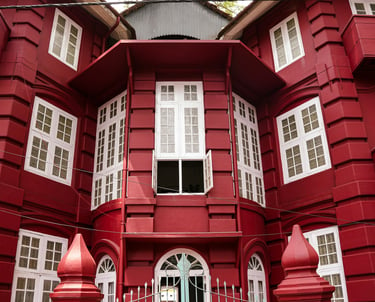
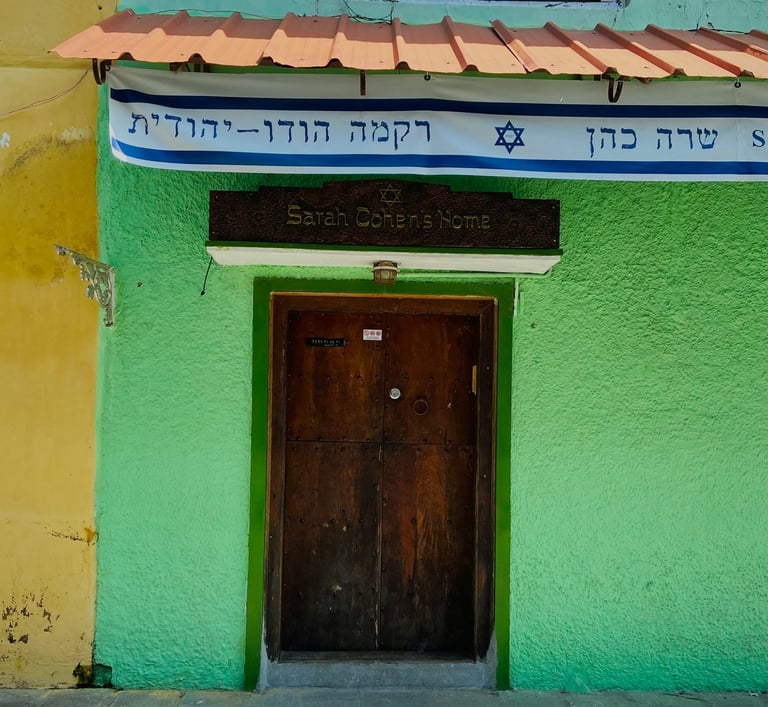

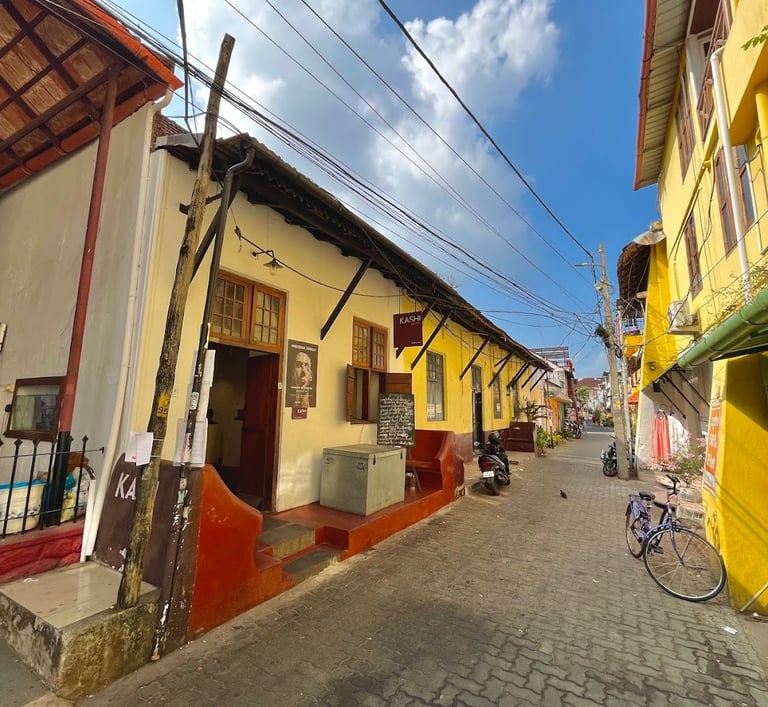

The Linguistic Melting Pot: How Words Transform
One of the most fascinating aspects of Malayalam's linguistic borrowing is how foreign words undergo systematic changes to fit Malayalam's sound system and grammar. This process, called "nativization," shows how alive and dynamic the language is.
Transformation Patterns:
Portuguese "janela" becomes Malayalam "janala"
Arabic "masjid" becomes Malayalam "palli" (though "masjid" is also used)
English "hospital" becomes "aspathri" in some dialects
Regional Variations: Not All Malayalam is the Same
The influence of other languages on Malayalam varies significantly across different regions of Kerala. Northern Kerala shows more Arabic influence due to historical trade connections, while central Kerala has stronger Tamil influences, and coastal areas retain more Portuguese loanwords.
Regional Examples:
Malabar region: Higher Arabic vocabulary
Kochi area: More Portuguese terms
Travancore region: Stronger Tamil connections
Our region-specific heritage tours beautifully demonstrate these variations. We arrange specialized Mattancherry spice market walks that showcase Arabic influences, while our Fort Kochi tours highlight Portuguese linguistic contributions. Each neighborhood tells a different story of linguistic evolution, and we ensure you experience them all with expert local guides.
Modern Challenges: Preserving While Evolving
Today's Malayalam faces an interesting challenge. While English influence continues to grow rapidly, there's also a movement to preserve traditional Malayalam vocabulary. Language purists advocate for using Sanskrit-derived terms instead of English ones, while progressives argue for natural linguistic evolution.
This tension creates interesting phenomena like:
Code-switching: Seamlessly mixing Malayalam and English in conversation
Revival movements: Efforts to bring back archaic Malayalam words
Digital adaptation: Creating Malayalam terms for internet and technology concepts
The Cultural Significance of Linguistic Borrowing
These borrowed words aren't just vocabulary items – they're cultural artifacts that tell the story of Kerala's history. Each Portuguese word speaks of colonial encounters, each Arabic term reflects centuries of trade relationships, and each English word shows modern globalization's impact.
Understanding these influences helps us appreciate Malayalam not as a "pure" language but as a living testament to Kerala's cosmopolitan heritage. It's a language that has always been open to the world, absorbing and adapting influences while maintaining its distinct identity.
Immersive Learning Opportunity: We arrange exclusive heritage festivals and cultural gatherings where local communities share stories about how their ancestors' languages influenced Malayalam. These specially curated events create meaningful dialogue around preservation and celebrate the diverse perspectives that shaped Kerala's linguistic landscape.
Learning Malayalam: Embracing the Diversity
For language learners, understanding these influences can actually make learning Malayalam easier. If you know English, you'll recognize many modern loanwords. If you're familiar with Sanskrit, you'll understand formal Malayalam better. Knowledge of Arabic helps with religious and cultural terms.
Tips for Malayalam Learners:
Don't be surprised by familiar-sounding words from other languages
Learn the historical context of different vocabulary layers
Pay attention to regional variations in loanword usage
Understand that formal and colloquial Malayalam may use different borrowed vocabularies
The Future of Malayalam: Continued Evolution
Malayalam continues to evolve, with new borrowings from English, Hindi, and other languages happening daily. Social media, globalization, and cultural exchange ensure that this linguistic evolution continues.
Recent additions include:
Technology terms from English
Bollywood influence bringing Hindi words
Global culture introducing terms from various languages

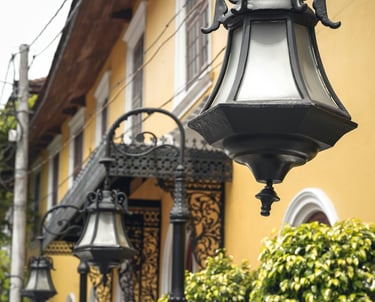
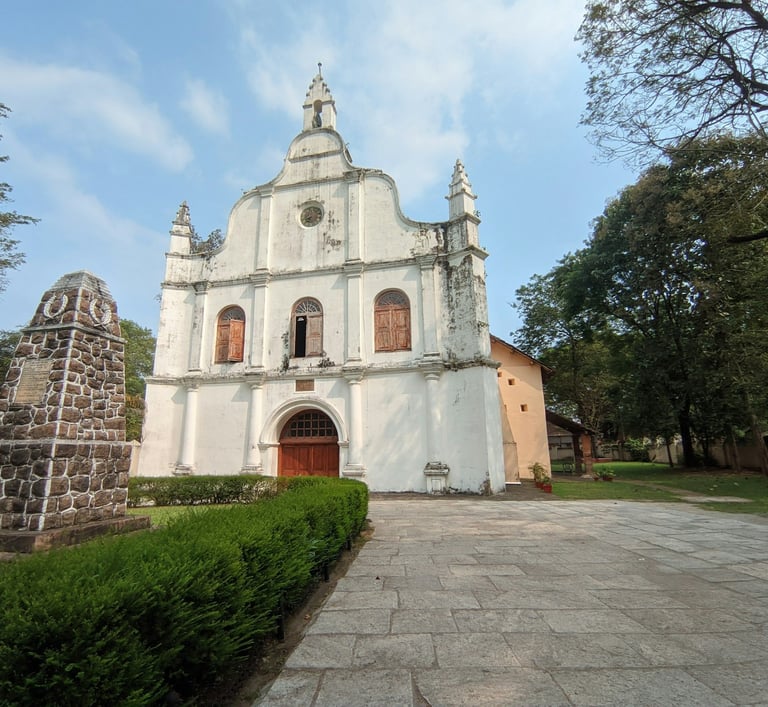

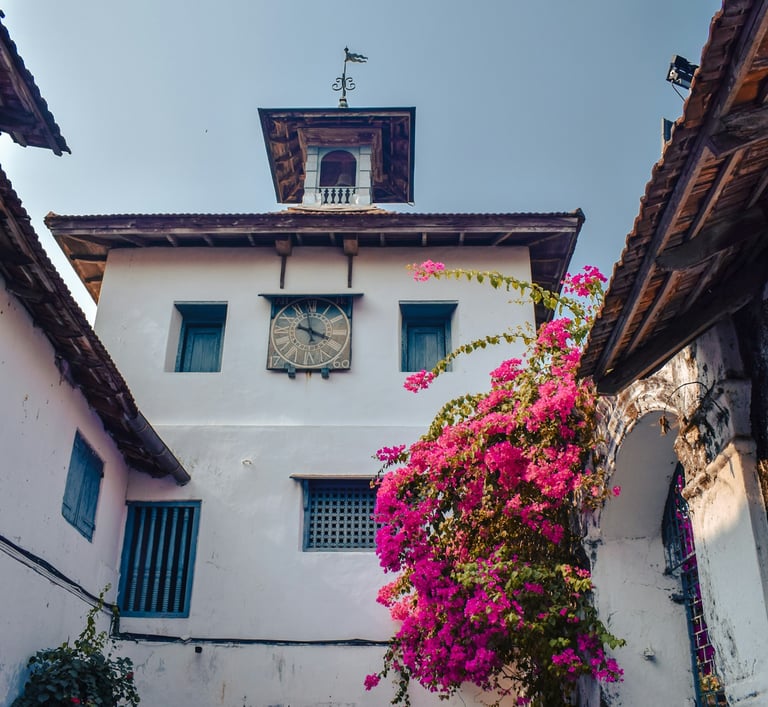

Celebrating Linguistic Diversity
The story of Malayali words influenced by other languages is really the story of Kerala itself – a land that has always been open to the world, welcoming traders, settlers, and ideas from across the globe. Rather than seeing these borrowings as corruption of a "pure" language, we should celebrate them as evidence of Malayalam's vitality and adaptability.
Every borrowed word in Malayalam carries with it a piece of history, a story of cultural contact, and a testament to the language's remarkable ability to grow and change while maintaining its essential character. Whether it's your grandmother's Portuguese-influenced recipes or your cousin's English-sprinkled tech talk, you're witnessing the beautiful, ongoing evolution of one of India's most cosmopolitan languages.
The next time you hear a Malayalam speaker effortlessly switch between Sanskrit philosophical terms, Arabic religious expressions, and English technical vocabulary – all within the same sentence – remember that you're not just hearing a conversation. You're hearing the voice of history itself, speaking through the living, breathing, ever-evolving tapestry that is the Malayalam language.
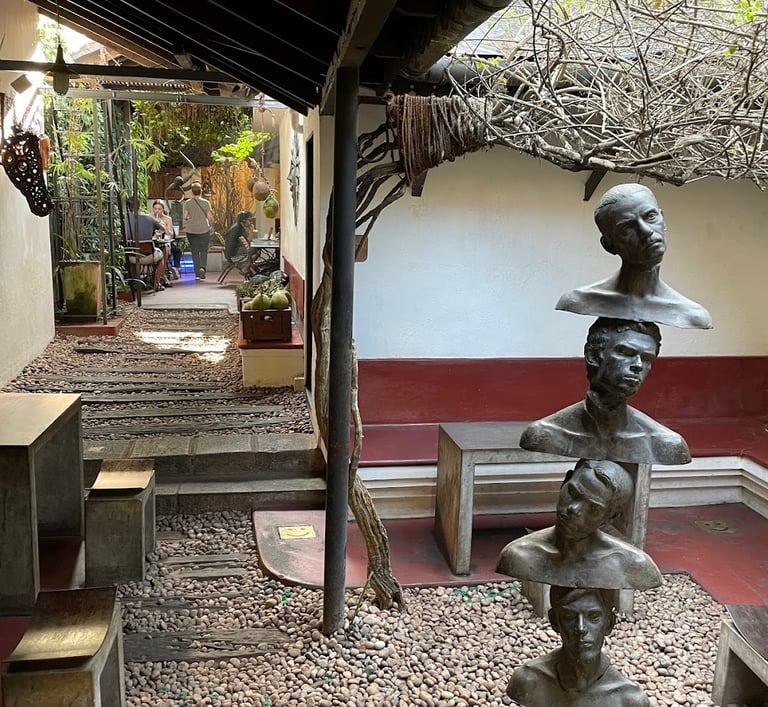

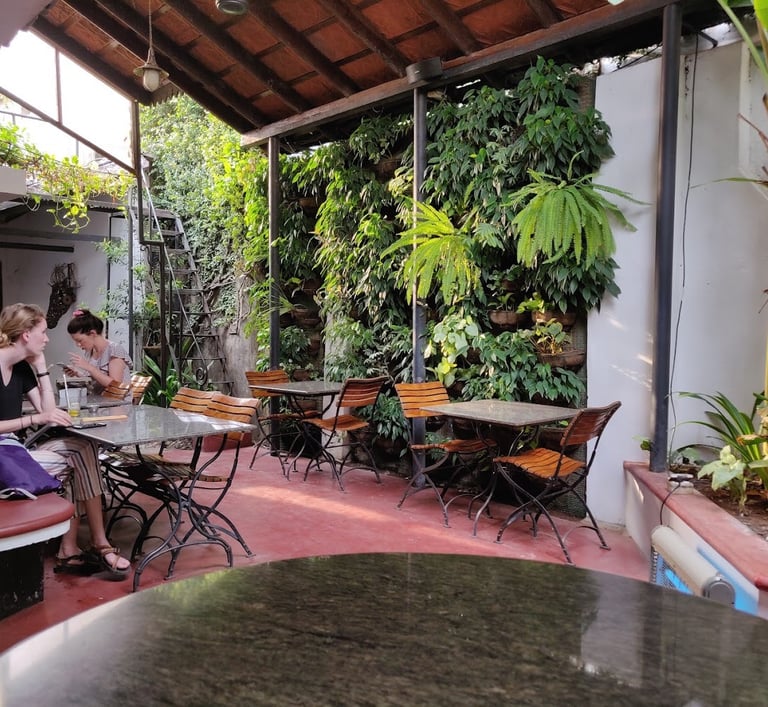



Fort Kochi is not just about Culture there is a vibrant Cafe Culture
LKashi Art Cafe stands as the undisputed pioneer of Fort Kochi's cafe revolution. Housed in a beautifully restored 150-year-old Dutch bungalow, this iconic establishment has been serving coffee enthusiasts and art lovers since 2001. The cafe's rustic interior features exposed brick walls, wooden beams, and an eclectic collection of local artwork that creates an inspiring atmosphere for creativity and conversation.
The menu at Kashi Art Cafe reflects its commitment to quality and authenticity. Their freshly baked goods, including delectable brownies, cookies, and pastries, are prepared in-house using traditional recipes. The coffee selection features both local and international beans, expertly brewed to perfection. Don't miss their famous banana bread, which has become legendary among regular visitors.
What sets Kashi Art Cafe apart is its role as a cultural hub. The space regularly hosts art exhibitions, live music performances, and cultural events, making it a gathering place for artists, writers, and travelers from around the world. The outdoor seating area, surrounded by lush greenery, provides a tranquil escape from the bustling streets outside.
Read more about the cafes in Fort Kochi read our article coffee lovers guide to historic charm.
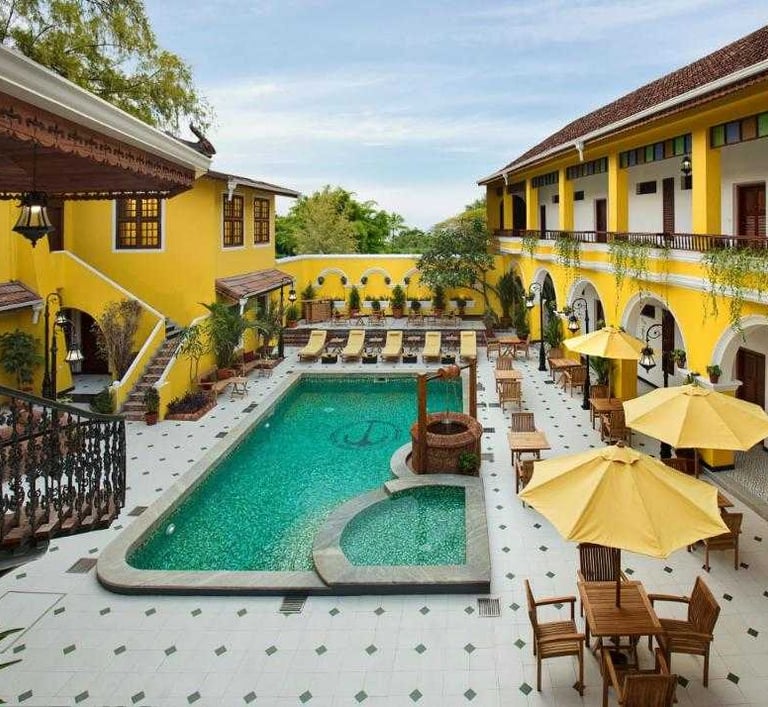


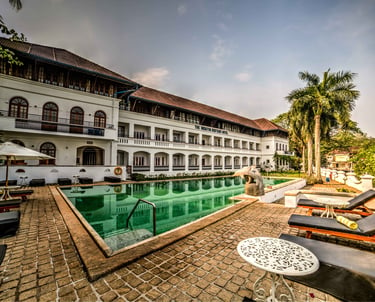
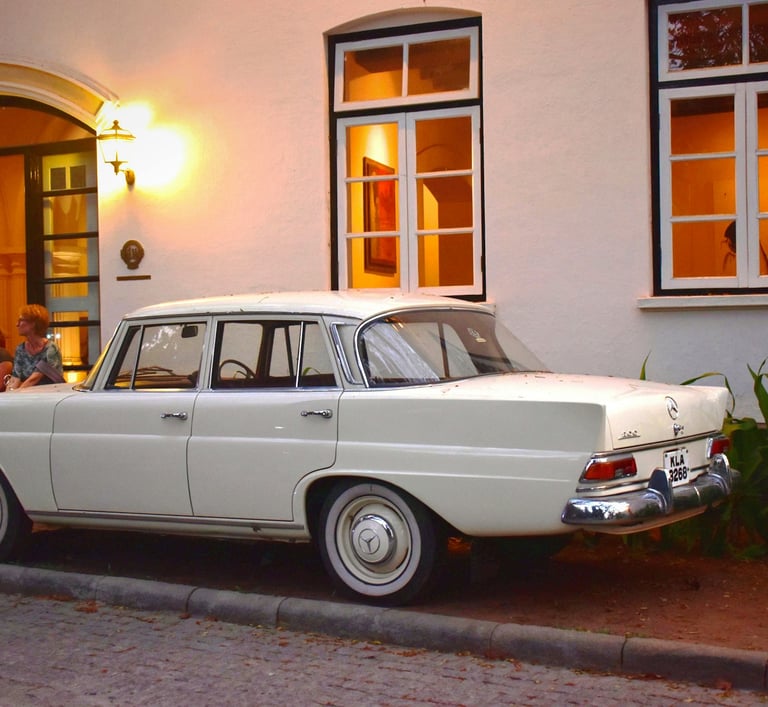

Luxury Heritage Hotels in Fort Kochi: Where Colonial Grandeur Meets Modern Elegance
Fort Kochi, Kerala's historic coastal enclave, offers discerning travelers two exceptional heritage properties that epitomize luxury accommodation: Old Harbour Hotel and Forte Kochi. These boutique hotels seamlessly blend centuries-old architectural splendor with contemporary comfort, providing an unparalleled luxury experience in one of India's most culturally rich destinations.
Old Harbour Hotel: A 300-Year Legacy of Hospitality
Heritage and Architecture
Old Harbour Hotel stands as a testament to Fort Kochi's multicultural heritage, housed within a 300-year-old building that has long been a heritage monument. Built in Dutch architectural style with Portuguese influences, it holds the distinction of being the first hotel of old Cochin. This boutique property has been meticulously restored while preserving its historical essence, making it a living museum where guests can experience authentic colonial charm.
Luxurious Accommodations
The hotel features sprawling suites with four-poster beds that are particularly luxurious. The Princess Suite boasts a private balcony and is the only room equipped with a bathtub, while the romantic Bastion Suite features a charming swing chair for two. Each room is uniquely named after a street in Fort Cochin and individually decorated, with categories including Superior rooms, Garden View rooms, Garden Cottages, and suites.
The Garden Cottages deserve special mention, as each features its own private entrance onto the manicured lawn, offering guests enhanced privacy and direct access to the hotel's lush gardens.
Prime Location and Amenities
Old Harbour Hotel enjoys a prime central location near the harbor and within a five-minute walk of the iconic Chinese fishing nets. The hotel provides top-tier facilities including a spa, swimming pool, and restaurant, with convenient access to transportation hubs.
The property's artistic soul and serene embrace of Kerala's lush greenery creates an atmosphere where history whispers through every corridor while modern luxury ensures contemporary comfort.
Forte Kochi: Portuguese Grandeur Reimagined
Architectural Marvel
Forte Kochi presents a magnificent medley of Portuguese, Dutch, and British architectural influences. Originally built by the Portuguese, this ancient structure was once part of the palatial home of an eminent Jewish family and was converted to a magnificent residence in the late 1800s. Built by the Dutch in the 1860s, this 5-star heritage hotel represents a breath-taking amalgamation of colonial architectural styles.
Opulent Interiors and Rooms
The accommodations at Forte Kochi are spacious and luxurious, featuring colonial four-poster beds, cozy window seats adorning arched wooden windows, and charming wall niches decorated with flowers and candles. The rooms boast high ceilings and colonial-style furniture including beautiful dressers and nightstands that complement the four-poster beds.
Strategic Location
Forte Kochi is strategically positioned on the popular Princess Street in the heart of Fort Kochi, placing guests at the center of the area's cultural attractions, historic sites, and vibrant street life.
Why Choose These Heritage Luxury Hotels?
Unmatched Historical Significance
Both properties offer guests the rare opportunity to stay within buildings that have witnessed centuries of Kerala's maritime history. From Portuguese colonization to Dutch occupation and British rule, these hotels are living repositories of Fort Kochi's multicultural past.
Boutique Luxury Experience
Unlike large commercial hotels, both Old Harbour Hotel and Forte Kochi provide intimate, personalized service with unique character in every room. The limited number of accommodations ensures exclusivity and attention to detail that discerning travelers expect from luxury boutique properties.
Cultural Immersion
The hotels' locations place guests within walking distance of Fort Kochi's major attractions including:
Chinese fishing nets
St. Francis Church
Dutch Palace
Jewish Synagogue
Spice markets
Art galleries and cultural centers
Modern Amenities in Historic Settings
Both properties successfully marry historical authenticity with contemporary luxury amenities, offering:
Spa services
Fine dining restaurants
Swimming facilities
Concierge services
Modern conveniences without compromising heritage aesthetics
Where Heritage Meets Luxury
Old Harbour Hotel and Forte Kochi represent the pinnacle of heritage luxury accommodation in Fort Kochi. These meticulously restored properties offer discerning travelers an authentic colonial experience wrapped in contemporary comfort. Whether you choose the Dutch-Portuguese elegance of Old Harbour Hotel or the multicultural grandeur of Forte Kochi, both properties promise an unforgettable journey through Kerala's rich maritime history while providing the luxury amenities expected by today's sophisticated travelers.
For those seeking more than just accommodation – for travelers who desire to inhabit history while enjoying world-class hospitality – these two heritage hotels in Fort Kochi offer an unparalleled luxury experience that captures the essence of "God's Own Country" in its most refined form.
Ready to Experience This Linguistic Heritage?
As your dedicated travel planners, we offer carefully curated heritage experiences that bring these linguistic stories to life through expert-guided walks, cultural tours, and educational programs. Whether you're a linguistics enthusiast, a heritage lover, or simply curious about Kerala's multicultural past, our specially designed experiences will give you a deeper appreciation for how Malayalam became the beautifully diverse language it is today.
We work with Kerala's finest heritage storytellers and local experts to ensure you get authentic, immersive experiences that go beyond typical tourist attractions. From Portuguese colonial quarters to Arabic spice markets, from traditional Kerala homes to historic synagogues – we arrange it all.
Still have questions? Check out our complete list of Kerala travel FAQs
Begin Your Kerala Escape
Contact us to book your Malayalam linguistic heritage experience and discover the fascinating multicultural story of Kerala's language through the historic streets of Fort Kochi.
The Kerala Tapestry: Portuguese Minha dama to Malayalis Madama
Discover the fascinating linguistic journey of Malayalam and how centuries of cultural exchange created the vibrant language we know today. Experience these linguistic stories firsthand through expertly curated heritage experiences in Kochi, where guided walks bring the evolution of Malayalam vocabulary to life through the streets and stories of historic Kochi.
SUBSCRIBE
Subscribe to be updated about latest news and blog posts and to follow what is happening in a magical land of Kerala.

